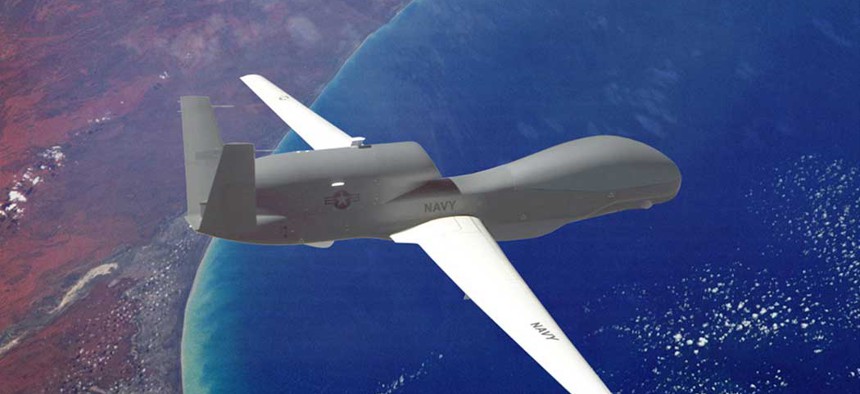NRL tests low-power, long-endurance sail drone
The Naval Research Lab, in partnership with Penn State, tested algorithms designed to increase the endurance of unmanned sailplanes that ride thermals the way some large birds do.

An unmanned sailplane soars above Aberdeen Proving Ground, Md.
Working with the Air Vehicle Intelligence and Autonomy Lab at Pennsylvania State University, NRL has tested a cooperative autonomous soaring algorithm, called the Autonomous Locator of Thermals (ALOFT) autonomous soaring algorithm, that can keep sailplanes airborne for much longer that previously possible, NRL said in a release.
The tests, in restricted airspace at Phillips Army Airfield, Aberdeen Proving Grounds, Md., consisted of pairs of unmanned sailplanes using thermal updrafts to stay in the air and sharing soaring data between them in flight. “Autonomous soaring algorithms seek out naturally occurring areas of rising air called thermals,” Dr. Dan Edwards, aerospace engineer and principle investigator of the solar-soaring program, said. “Cooperative autonomous soaring combines data from multiple autonomous soaring aircraft to make a more complete measurement of the local atmospheric conditions. This atmospheric map is then integrated to guide both aircraft toward strong lift activity quicker than if it was just a single aircraft, a technique very similar to that used by a flock of soaring birds.”
Thermals are something taken advantage of by birds such as the common turkey vulture, which, while not one of the handsomest creatures on the planet, is an incredibly efficient flier. Once in the air, they’ll catch an updraft to gain altitude and then can travel far without ever flapping a wing. (They also illustrate one limit for sailplanes, which is that they’ll need sunny days to fly, because heat from the sun creates the thermals they ride on. Even turkey vultures stay home in their nests on cloudy days.)
Penn State’s aircraft during the two-week testing period achieved flight times of 2.5 hours in spite of an onboard battery that had only enough power to keep its propeller active for four minutes, while NRL’s aircraft was capable of sustaining flight for 5.3 hours while running a motor-driven propeller for only 27 minutes. The aircraft were able to achieve altitudes using thermals to about 5,000 feet.
“[T]his testing showed proof of concept on multiple occasions, with both aircraft finding thermals and 'calling' the other aircraft over to use the same area of lift to increase endurance of the swarm,” said Edwards.

NRL and Penn State researchers show off their aircraft.
Going forward, testing will focus on reducing the separation distance so both aircraft can soar in the same thermal at the same altitude, NRL said. Researchers also will look into the use of solar photovoltaics – which are cells that turn ultraviolet rays of sunlight into electricity http://www.nrel.gov/learning/re_photovoltaics.html – to the cooperative autonomous soaring techniques that will enable long endurance flights using solar power.
The programs are aimed at improving the availability of a “a 24-7 information, surveillance, and reconnaissance (ISR) mission without using logistics fuel, benefitting the expeditionary warfighter by enhancing the endurance of existing and future UAV assets,” NRL said.
NEXT STORY: Northrop wins contract for GPS upgrades





